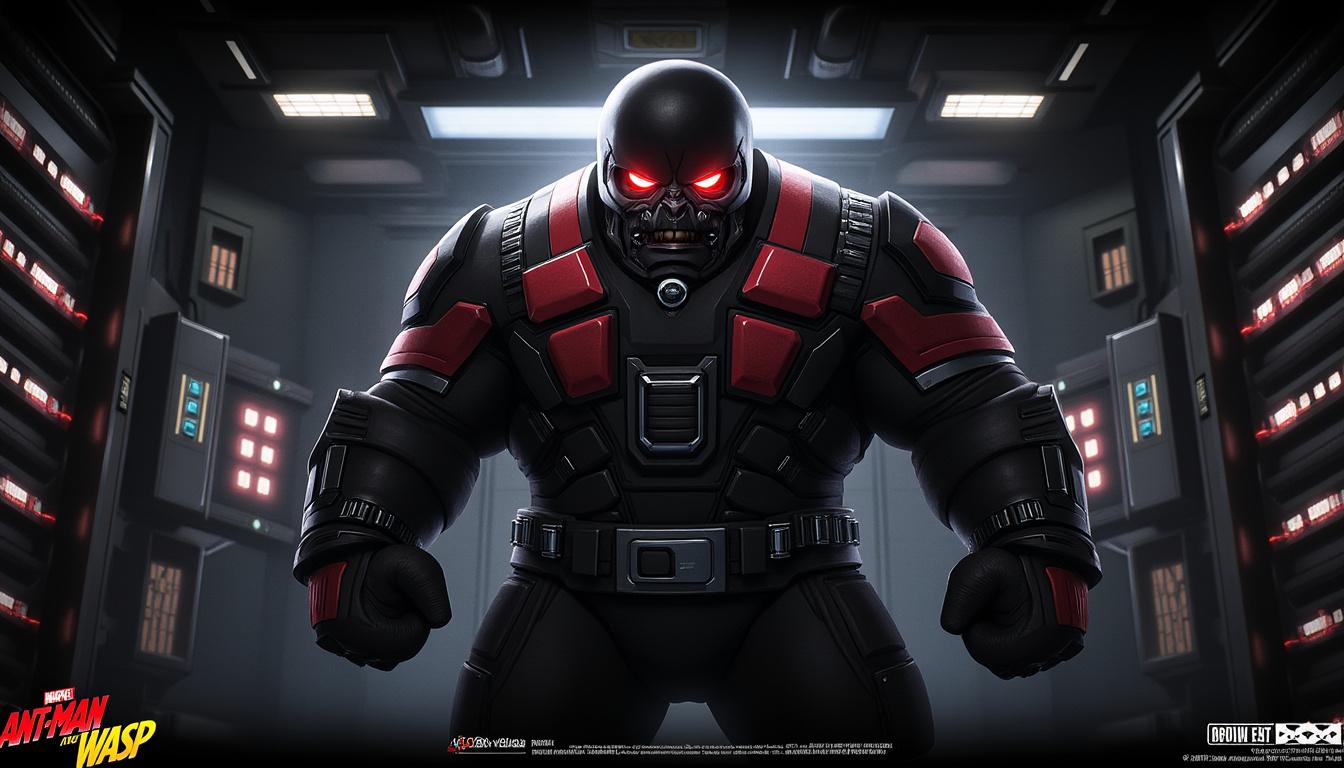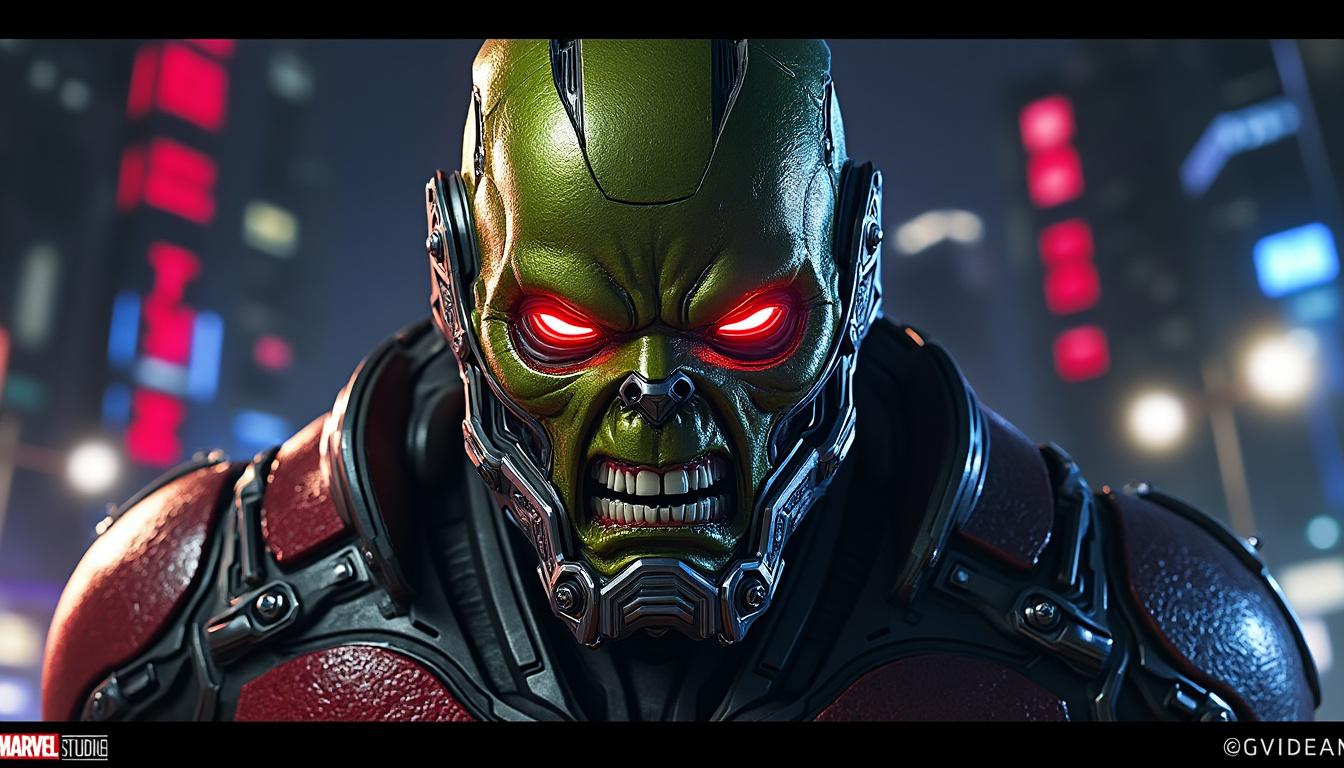Fans of the Marvel Cinematic Universe (MCU) have been abuzz as new concept art showcasing an alternate version of MODOK from Ant-Man and the Wasp: Quantumania has surfaced. Designed by artist Aleksi Briclot, this previously unused take presents a much more intimidating and impactful portrayal of this iconic comic book character, echoing both his villainous nature and deeper sci-fi horror roots. This exploration of MODOK reveals just how crucial artistic decisions can be in shaping audience perceptions of a superhero’s nemesis in blockbuster films.

Exploration of MODOK’s Characteristics in the Marvel Universe
MODOK, which stands for Mental Organism Designed Only for Killing, is one of the most visually distinct villains in the Marvel Universe. Often depicted as a grotesque, oversized head floating in a hoverchair, his original comic book design reflects a tragic blend of genius and monstrousness, presenting him as a clear representation of both intellect and physical inadequacy. Over the years, MODOK has become a staple of the superhero genre, particularly representing the underbelly of villainy through his ties to Advanced Idea Mechanics (A.I.M.), an organization notorious for technological experimentation without moral boundaries.
In the comics, MODOK is often characterized by his brutal tactics and considerable mental prowess, making him a dangerous adversary for the likes of Ant-Man and even Iron Man. His psyche, marred by his physical deformities and the trauma surrounding his transformation into MODOK, adds layers to his character that resonate with themes of body horror and existential dread.
The Impact of Concept Art on Characterization
The concept art presented by Briclot for Ant-Man 3 underscores how crucial early designs can shape a character’s perception. The unused images showcase a much darker representation which imagines MODOK as a horrifying death machine, a stark contrast to what was ultimately realized in the final film. Initially, Briclot aimed to achieve a menacing appearance reminiscent of the character’s comic roots, combining elements of awe and terror.
- Horror Elements: The intention was to create a design that provoked fear, much like classic horror films.
- Comic Accuracy: Striving for a look that remained faithful to MODOK’s comic book origins adds depth.
- Engagement Strategy: Enhancing the character’s threat level can draw audiences deeper into the narrative.
Subscriber reactions have revealed a significant disappointment over the final portrayal, with fans expressing that the original sketches have more emotional resonance and visual impact than the CGI design of the final version.
This insight into the artistic process shows how vital concept art is in storytelling, as it not only lays the groundwork for character development but also influences how audiences emotionally respond to these characters.
Fan Reactions to MODOK’s Design Shift
The reveal of Briclot’s concept art on social media sparked widespread discussion among fans, who highlighted discrepancies between the anticipated portrayal and what was eventually seen on-screen. Reactions poured in across platforms, with many noting the significant shortcomings they felt in MODOK’s final representation in Ant-Man.
Critics took to social media platforms like Instagram and Twitter to express their disappointment. Comments ranged from disbelief that Marvel didn’t utilize a more menacing design to outright praise of Briclot’s creativity and vision.
Differing Perspectives on Character Design
Views on MODOK’s transformation from concept to final film depiction reveal much about audience expectations and the nature of superhero films. The following perspectives emerged:
- Artistic Miss: Many fans argued that the final design appeared ‘cartoonish’ and failed to capture MODOK’s essence, derisively referring to it as the “stretched face spy kids thing.”
- Comic Book Affinity: Other commenters felt more attuned to the character’s comic roots, enjoying Briclot’s portrayal of MODOK as a decaying figure reminiscent of horror tropes.
- Potential for Horror: Some fans were disappointed that a chance to explore darker themes—such as body horror—was lost in favor of a lighter comedic tone that is often prevalent in the MCU.
Fan opinions highlight the delicate balance between retaining comic book fidelity and crafting a film-friendly design. The tasked artistic teams carry the heavy responsibility of translating beloved characters from print to screen while still aligning with a specific thematic vision of the film.
The Role of Technology in Character Realizations
The creation of digital characters like MODOK highlights the advances in technology within the film industry. The leap from sketches to CGI often underscores how technology can both enhance and hinder the portrayal of established characters in popular media.
CGI vs. Traditional Techniques
In the case of MODOK, the use of CGI aimed to provide a lifelike rendition of a character who is, by nature, exaggerated and surreal. Unfortunately, the final interpretation fell short for many viewers. Elements that usually enhance CGI, such as lighting, textures, and movement, somehow led to the viewer perceiving MODOK as less threatening. This brought forward discussions about the effectiveness of relying heavily on technology rather than practical effects or traditional animation methods.
- Pros of CGI:
- Flexibility in design alterations.
- Smooth integration with live-action environments.
- Potential for highly detailed textures.
- Flexibility in design alterations.
- Smooth integration with live-action environments.
- Potential for highly detailed textures.
- Cons of CGI:
- Can produce lifeless or uncanny designs.
- Targeted comedic elements adrift overshadows the intended horror.
- Loss of tactile character quality that audiences love.
- Can produce lifeless or uncanny designs.
- Targeted comedic elements adrift overshadows the intended horror.
- Loss of tactile character quality that audiences love.
Taking a step back, artists and directors should evaluate whether the reliance on technology enriches or detracts from a character’s compelling presence on screen, especially for a personality as multifaceted as MODOK.
Comparative Analysis of MODOK Across Media
As a character that has appeared in various adaptations—ranging from comics to animated series and now to live films—analyzing MODOK’s portrayals over the years provides valuable insights into artistic interpretation trends.
Different Media Representations
In transitioning from comics to screen, MODOK has undergone profound transformations in visual design and thematic exploration. Following are notable representations:
| Media Type | Description | Key Representation |
|---|---|---|
| Comics | Traditional portrayal as a grotesque villain with a huge head, obsessed with domination. | Origins connected with A.I.M and body horror. |
| Animated Series | Often presented as comedic, focusing on his eccentricities rather than menacing nature. | Highlighted more for humor than horror elements. |
| Live-Action Film (Ant-Man 3) | Attempted to depict a balance between humor and menace, ultimately leaning too far into light comedy. | Failed to capture his foreboding essence, veering towards a more palatable version. |
These variations across different adaptations reinforce the complexities of portraying a character like MODOK and how varied director visions can greatly influence audience reception.
In essence, as the discourse surrounding MODOK continues, so too does the fascination with how creators navigate the balance between visual appeal, character integrity, and thematic exploration. Each portrayal offers fans an opportunity to reflect on the narrative depth behind the characters they have come to love and despise.


